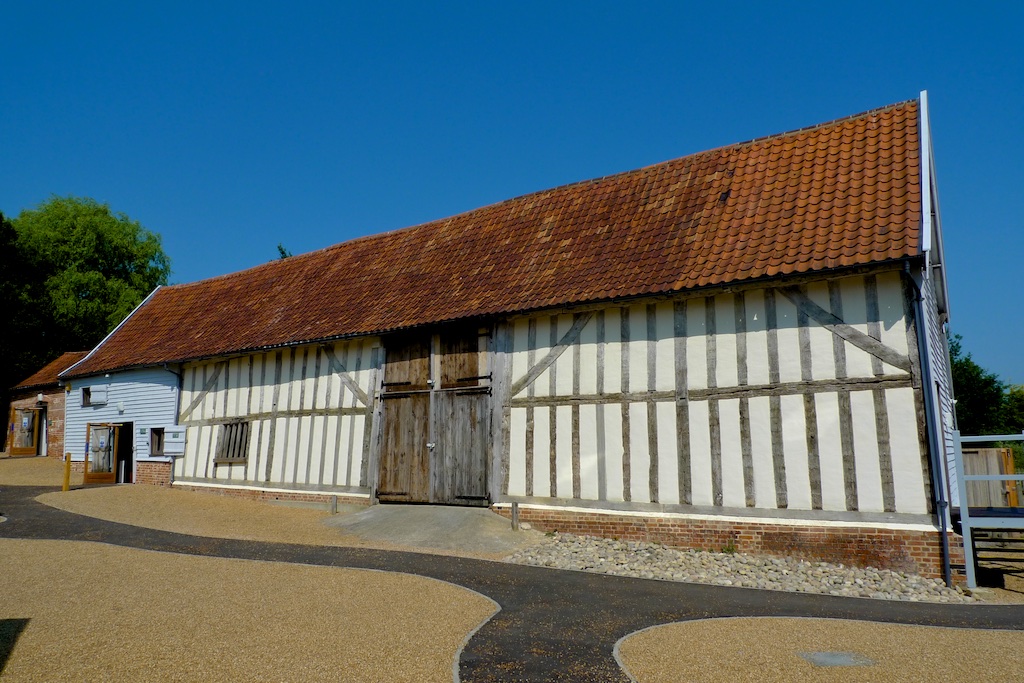Pictures of buildings mentioned in the second edition “Suffolk” volume of “The Buildings of England” series by Sir Nikolaus Pevsner.
The village is named after the de Wingfields who died out in 1361 and their estates passed to the de la Poles who provided the 1st to 4th Earls of Suffolk and the 1st to 3rd Dukes of Suffolk before themselves dying out about 1525.
There are three wonderful buildings in Wingfield as well as the Church. The village is very important to Suffolk history as the Castle was home to the de la Poles and to Charles Brandon - all Dukes of Suffolk. For more, also see the pages on the de la Poles , their origins in Hull with its relationship to English bricks, the Brandons and the page on bricks.
Churches are not usually covered on this website because they are well covered elsewhere but Wingfield’s Grade 1 listed St Andrew is an exception because of its historic associations. Pevsner devotes nearly two pages to it (pp490/492 of second edition). It is shown here:
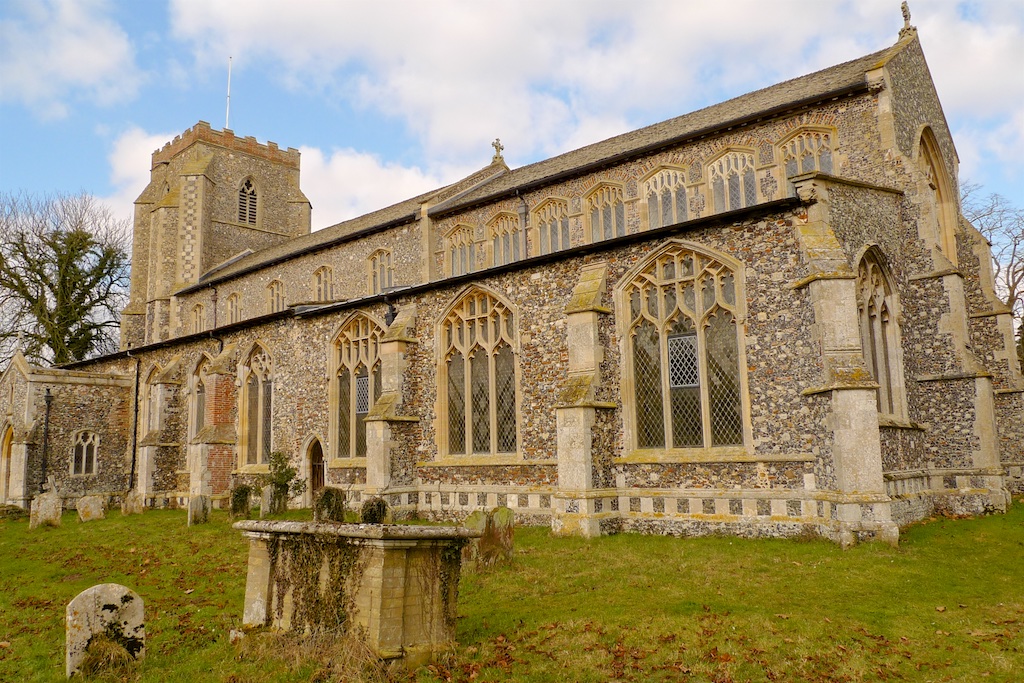
The interior needs to be explored with Pevsner in hand, although there are usually some good booklets available to buy in the Church as well. Pictures here are only of monuments. The first mentioned by Pevsner is Sir John Wingfield:
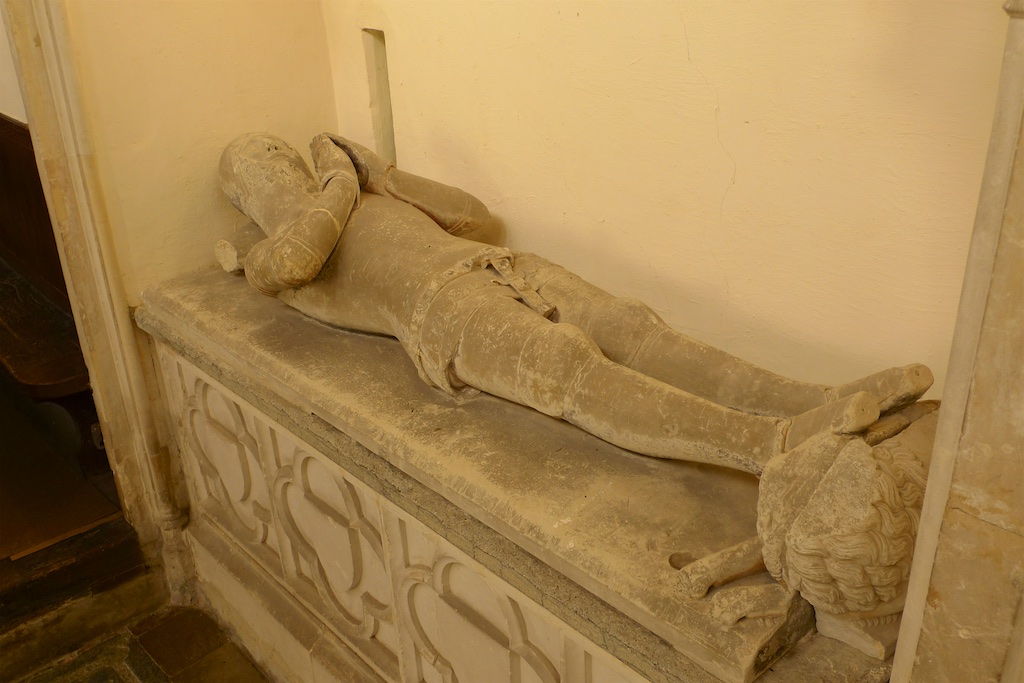

Then Michael de la Pole and his wife Catherine:
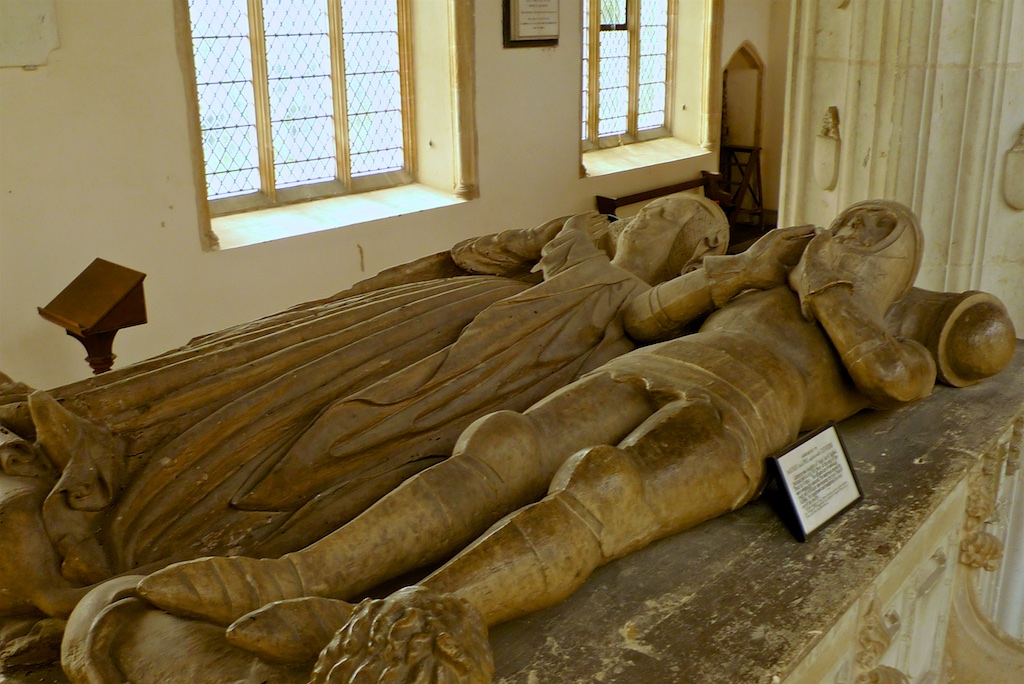
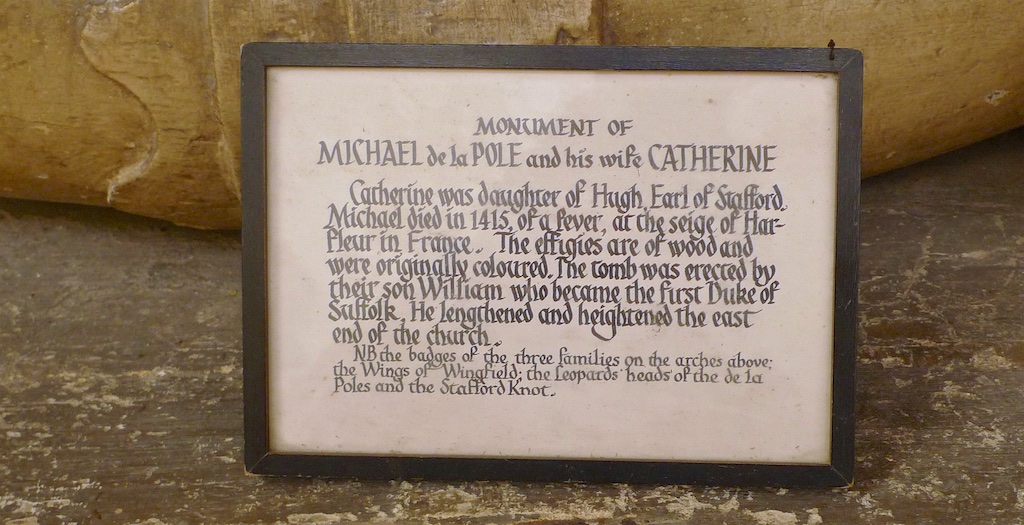
Followed by John de la Pole (p492) and 2nd Duke of Suffolk: his wife Elizabeth was a Plantagenet and sister of Edward IV and Richard III so here is royalty in a Suffolk church:
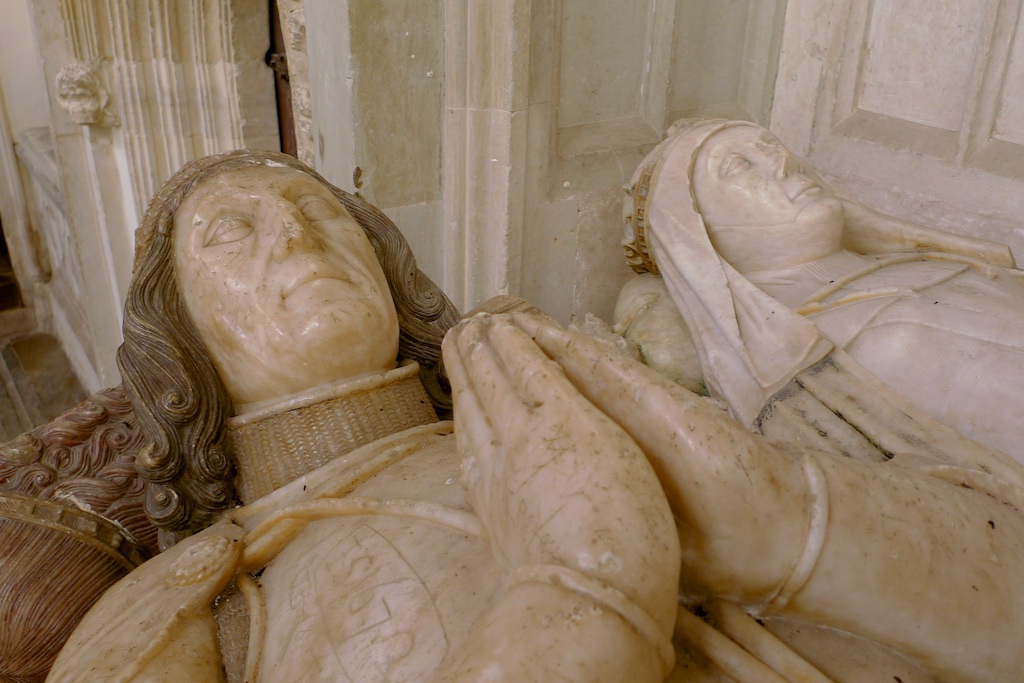
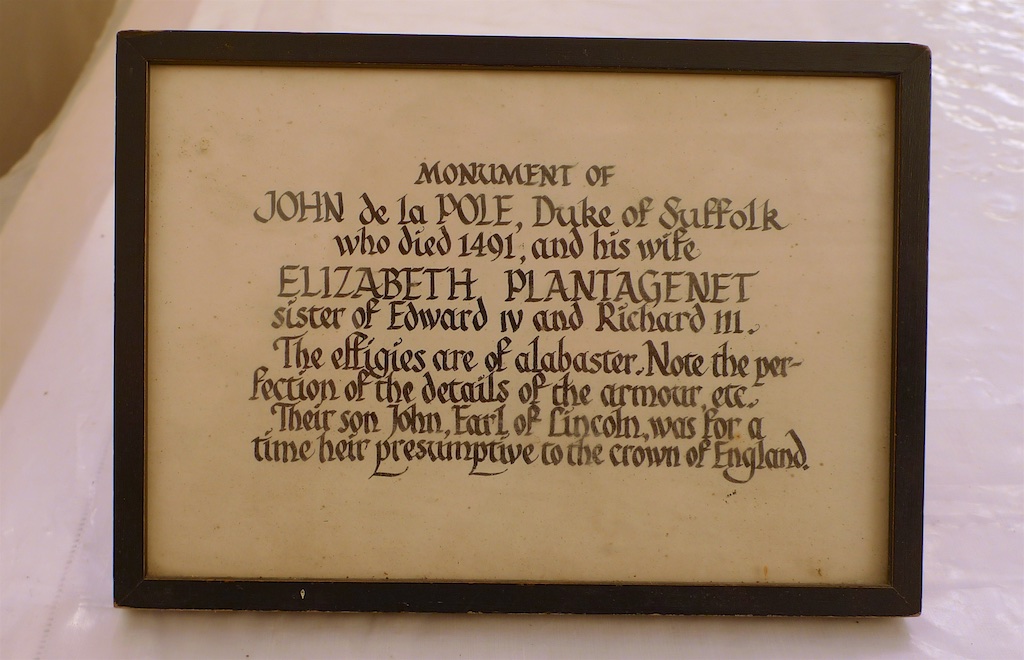
Pevsner then moves on to Wingfield Castle, also Grade 1 listed, of which he says: “Built by Michael de la Pole. Licence to crenellate (i.e. build battlements) was given in 1384. Splendid outer front with central three-storeyed gatehouse. Big polygonal turrets with flushwork arcading at the base. Two-storeyed wall l. and r. with angle towers. Brick battlements. The windows still have flowing details. Archway with four-centred arch, with multiform mouldings dying into the imposts. Original door with blank tracery. Inside the gateway shafts for vaulting and four doorways with two-centred arches. The archway to the inner courtyard is simpler. The house stands at r. angles to the gatehouse. On the outer facade its position and date are indicated by two three-light mullioned and transomed windows. The house is said to date from shortly after 1544. Partly brick, partly timber-framed. Fine circular brick chimneys with three-dimensional decoration."
Jane Wight in Brick Building in England notes that licence to crenellate was given “at time of 1381 peasants revolt” and later that “peasants still held at bay: the only private property where permission to view has been refused (1967).” She also notes “a little mediaeval brick, especially in the voussoirs and vaulting of arch, but this seems to belong to remodelling of c. 1490.”
The moated Wingfield Castle is a private residence and is not open to the public. In summer it is mostly obscured by trees but in winter is more visible. An excellent picture of it before the surroundings were deliberately left to overgrow for privacy is sometimes available as a postcard from within the Church. Here is the best I could manage:
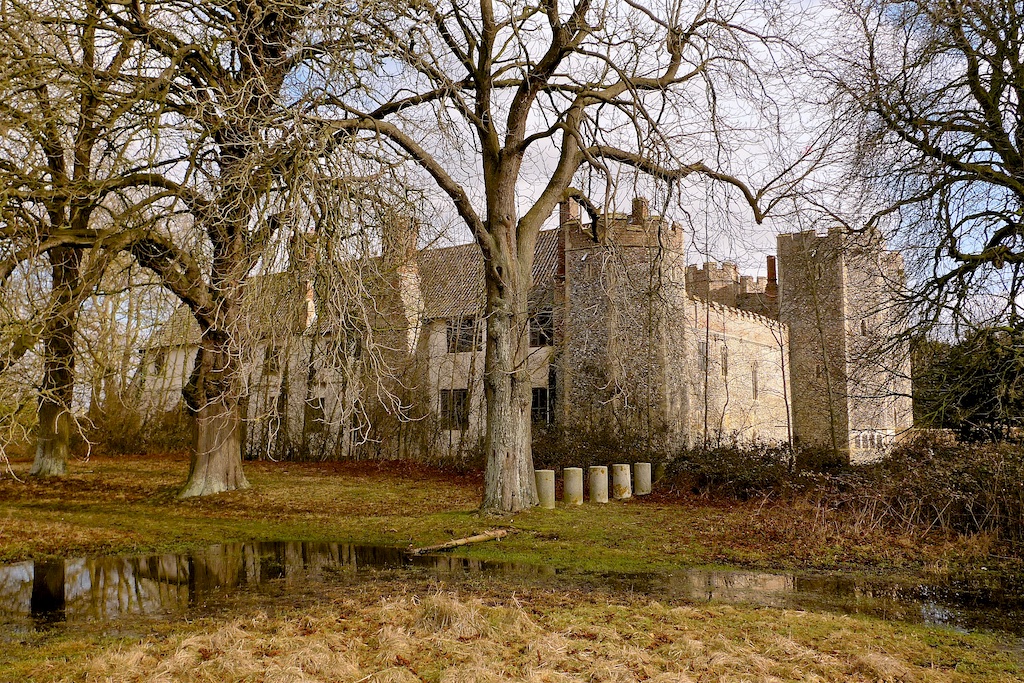
Pevsner then moves on to the Grade II* listed College Farm, known now as Wingfield College, of which he says: “Handsome House of c1760 (he is wrong - but see on), rather surprising in its proportions (he is right - but see on). Nine bays, two storeys, with a pedimented, slightly projecting five-bay centre. The wings have the odd rhythm of a centre with a Venetian window on the ground floor and blank wall above it on the second. Central doorway with segmented pediment on the Doric pilasters set against a rusticated ground.” Here is the front view from the road:
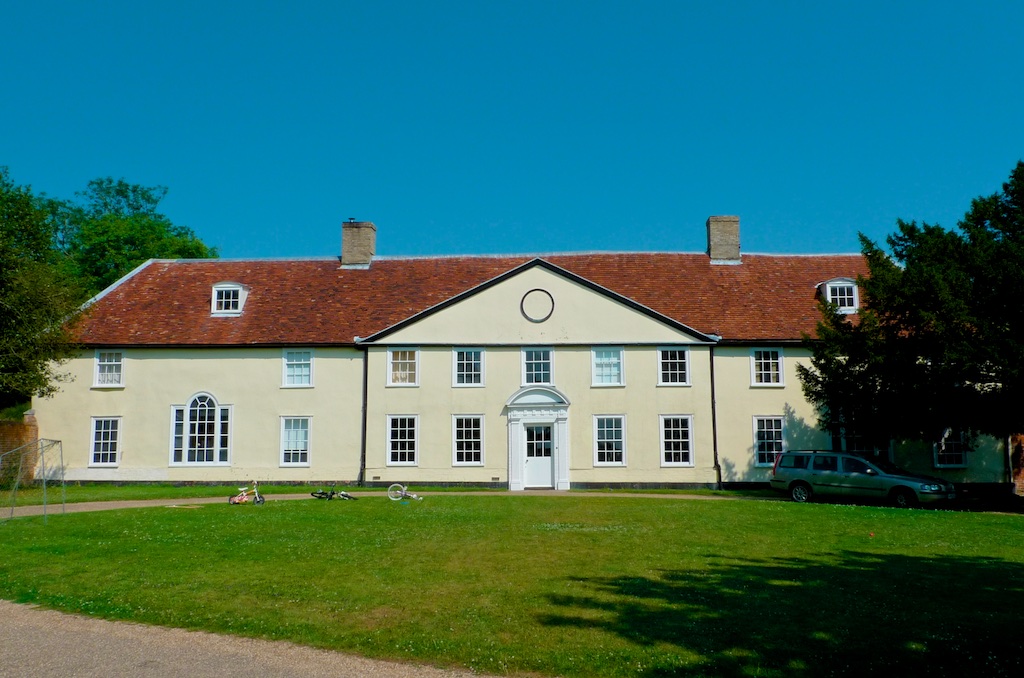
and here the side from the churchyard:
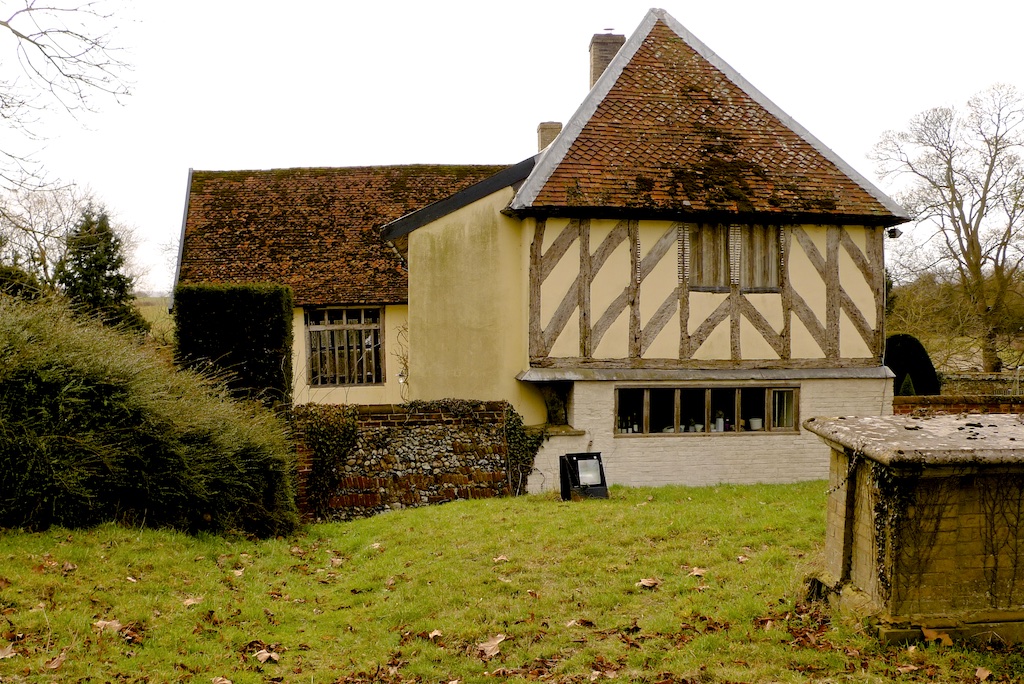
Wingfield College has an interesting web-site which notes that “the grand Georgian facade ...conceals the remnants of a college of priests complete with a cloister walk and a Great Hall from 1362”. The Georgian facade is reasonably easy to spot as a later addition as it is not truly symmetrical - the right wing is shorter than the left.
The college was set up by Sir John de Wingfield in 1362 and celebrated its 650th anniversary with an event in 2012. This was accompanied by early Sunday morning mass in Latin in the church in evocation of the original period. The event led to a book on the College: Wingfield College and its Patrons, Edited by Peter Bloore and Edward Martin, published by The Boydell Press (2015), ISBN 978 1 84383 832 6.
It was a chantry college in that its aim was to provide “chanting” (prayers) for the soul of Sir John when he died with a view to progressing him to heaven from the half-way stage known as Purgatory. This was a money making scam by the Church at the time. The rich and powerful (such as Sir John) paid more for their “insurance” than ordinary people but Sir John must have worked out that students were cheaper than a full cast of priests. In any event, Henry VIII put a stop to such activities with the dissolution: chantries and the like were duly dissolved by an act of 1545.
The College can be visited from time to time through the Invitation to View scheme. The University of East Anglia created a 3D virtual tour video of how it was imagined to be in its original form which may still be available.
The second edition of Pevsner has an addendum credited to J T Smith: “At the back of College Farm is a range of domestic buildings belonging to the C14 priests’ college: a long corridor on the ground and first floors, and, projecting to the E, the remains of the great hall (truncated). This has an open truss of raised aisle construction (cf Church Farm, Fressingfield) with a crown-post”. Some of these now form part of the main house whilst others, including the barn, have been separated from College Farm and form a separate venue . Seen here:
